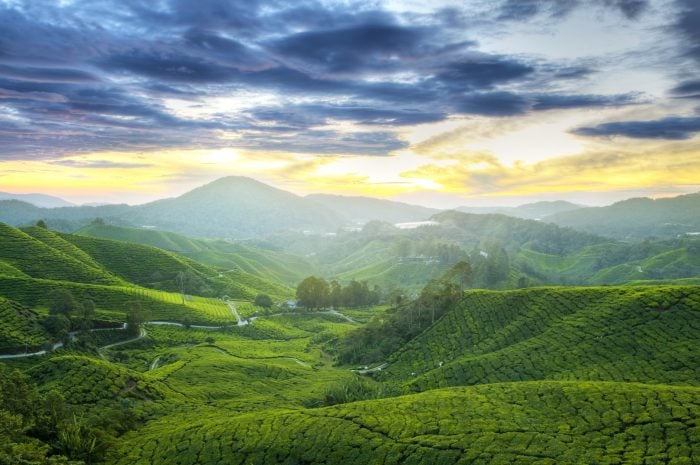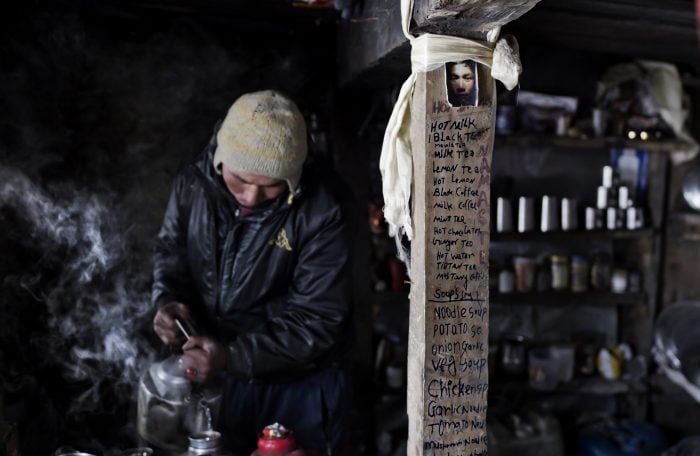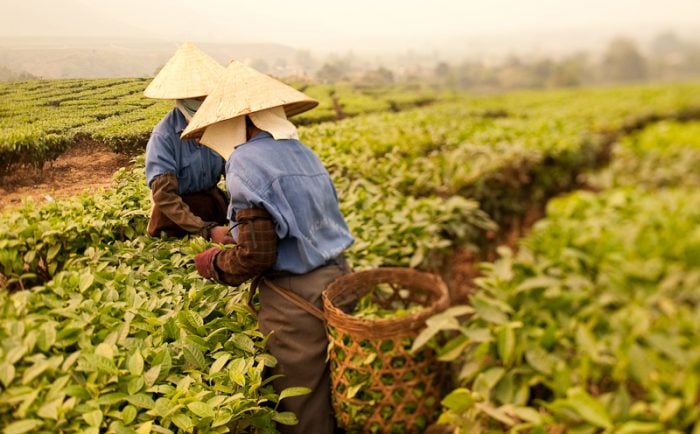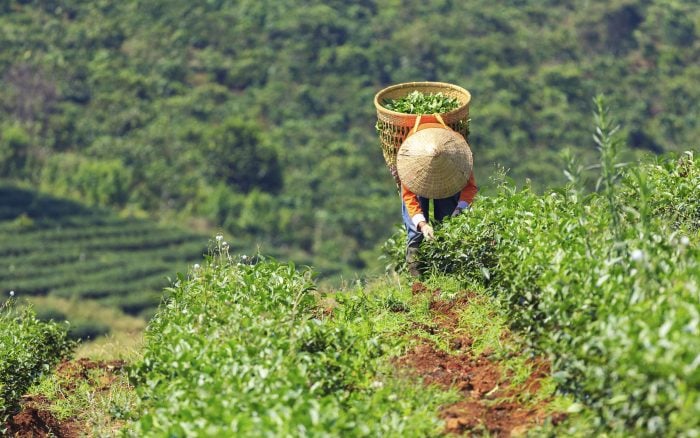Wander through tea plantations in the misty highlands and experience tea ceremonies in their traditional setting. Asia’s tea culture is as fascinating as it is diverse.
BHUTAN

1. Warm up with Himalayan butter tea
All across the Himalayan region, the traditional drink of choice has long been butter tea, named po cha in Tibetan. Combining tea leaves, water, yak butter and salt, po cha is made in a wooden butter churn then drunk for its warming calorific qualities in the harsh Himalayan climate. And, it’s offered to guests to show hospitality, when the tradition is to keep filling up the guest’s tea cup after each sip they take to ensure they don’t run out. As a traditional part of life in the Himalayas, you might be offered po cha during a homestay, but if not, try the salted butter tea in RIMPS tea lounge at the Taj Tashi hotel in the capital city Thimphu.
HONG KONG

2. Delve into Chinese tea culture
Chinese tea culture differs from that of the other tea-drinking nations, from the way the tea is prepared to the occasions it’s drunk. Aside from family celebrations, tea is served to show respect, apologise and express gratitude, while the traditional way of preparing and drinking the tea is held in such reverence, it’s even considered an art. Teahouses – which were originally the meeting place of China’s scholars – showcase these tea traditions, and there are a number of well known spots to head to in Hong Kong. In a recent interview for The Explorer, the Hong Kong-born internationally renowned entrepreneur Sir David Tang recommended Luk Yu Tea House on Stanley Street. The colonial-style tea house has been open since 1933 and still retains its distinctive decor while specialising in Chinese tea and dim sum.
INDONESIA

3. Wander through sweeping tea estates
Since the Dutch introduced tea to Indonesia, the nation has been one of the world’s biggest tea producers, with its main tea regions in west and central Java and northern Sumatra. On a journey through Java, head west to the Gunung Mas Tea Estate in the highlands of Puncak. Within the estate, take a guided walk through the tea fields that sprawl over 6,000 acres of land, meet the estate’s tea pickers and take a tour of the tea factory to see how the leaves are processed before they are transported across the globe.
JAPAN

4. Discover the art of tea drinking
After tea was first introduced to Japan, all the way back in the twelfth century, it became firmly integrated into Japanese culture, while Zen Buddhism had a defining influence on the way tea was prepared and drunk. The principles of Chado – meaning the way of tea – are harmony, respect, purity and tranquility, while the tea ceremony itself is considered an art form with a series of precise steps. Visitors to Japan can take part in a tea ceremony in one of the many traditional tea houses and tea gardens throughout Japan, including Joukeian and Nishijin Tondaya in Kyoto, and Happoen and Chado Kaikan in Tokyo, which offer other cultural experiences too.
Shizuoka Prefecture in the south of the Chubu Region lies on the Pacific coast and is the country’s largest tea producing region, with sprawling fields of green tea; tea farms like Greenpia Makinohara offer tea picking and factory tour experiences. Meanwhile, the powdered green tea matcha that’s used in traditional tea ceremonies is also used to flavour a whole array of sweets and cakes; matcha ice cream is a must try and can be found countrywide.
MALAYSIA

5. Explore picture-postcard tea plantations
Characterised by colonial architecture amidst undulating green tea fields, The Cameron Highlands have long been a welcome retreat from the heat of lowland Malaysia. Plus, visitors to the region have the opportunity to take guided walks through the plantations and tour a tea factory while learning about tea production. Perhaps the most famous tea estate is BOH, which has a cafe with floor-to-ceiling windows, affording panoramic views of the rolling green plantations. The Cameron Highlands’ other two crops – with tours – are strawberries and flowers, making a trip here even more appealing.
NEPAL

6. Experience Nepali tea and hospitality
Tea, known as chiyaa in Nepal, is an integral part of daily life and always offered to visitors who come by. In fact, the morning and noon greeting ‘chiya khaayo’ can be translated to ‘did you drink tea?’. In the mountains, much like in Bhutan, the tea is drunk with salt and ghee instead of adding sugar and milk, but across the country there’s a far wider variety. After tea arrived from India in 1950, Nepal started to grow and produce its own tea, and now the nation drinks a variety of specialty teas, including masala chai that’s brewed with spices, sugar and milk. While trekking through the mountainous landscape, stop by the local teahouses to experience true Nepali tea and hospitality.
SINGAPORE

7. Be a part of the contemporary tea scene
With its Chinese community, Singapore has taken on many aspects of the culture, including the culture of tea. Traditional Chinese teahouses in the city are now promoting the health benefits of drinking tea, as well as educating people on the tradition of Chinese tea ceremonies. Tea Chapter and Yixing Xuan Teahouse are two that are especially well known and offer workshops in addition to serving an extensive range of tea. TWG is Singapore’s own tea brand, with cafes around the island that have a more modern aesthetic, serve indulgent afternoon teas and sell a number of enticing products, from tea leaves to macarons and tea accessories for the home.
VIETNAM

8. Venture to Vietnam’s original tea region
Having cultivated tea for over 2000 years, Vietnam is one of the largest tea producers worldwide, with tea growing regions in the highlands of north and central Vietnam. Head to Dalat, the capital of Lam Dong Province, to tour Cau Dat tea plantation and tea factory where Vietnam’s tea industry began. Cat Dau Tea Factory was established back in 1927 and sits amidst green tea plantations that cover 230 hectares. In Vietnam, tea is used for both social and ceremonial occasions at home and in teahouses, while street-side tea vendors serve both hot and iced tea to passersby.










